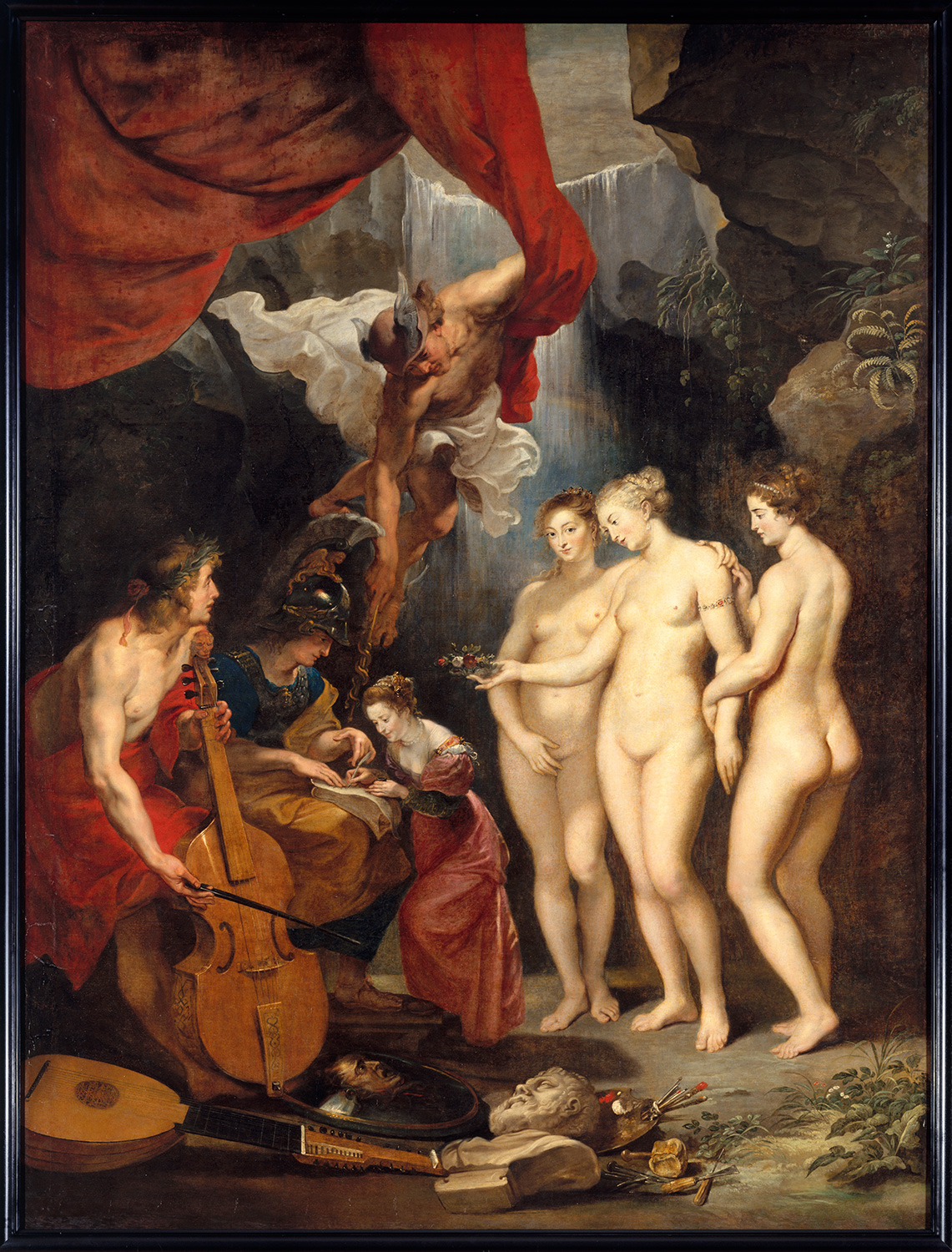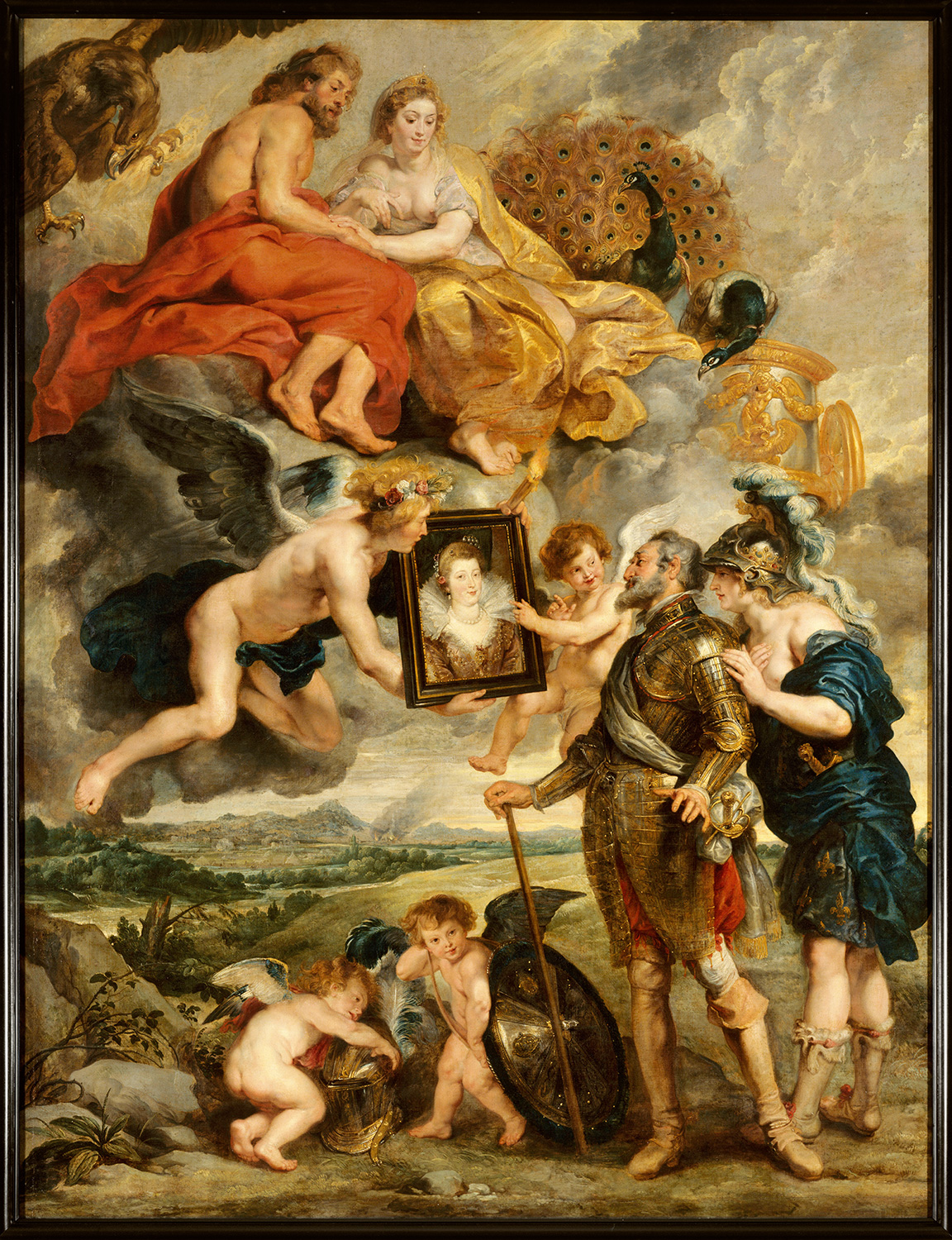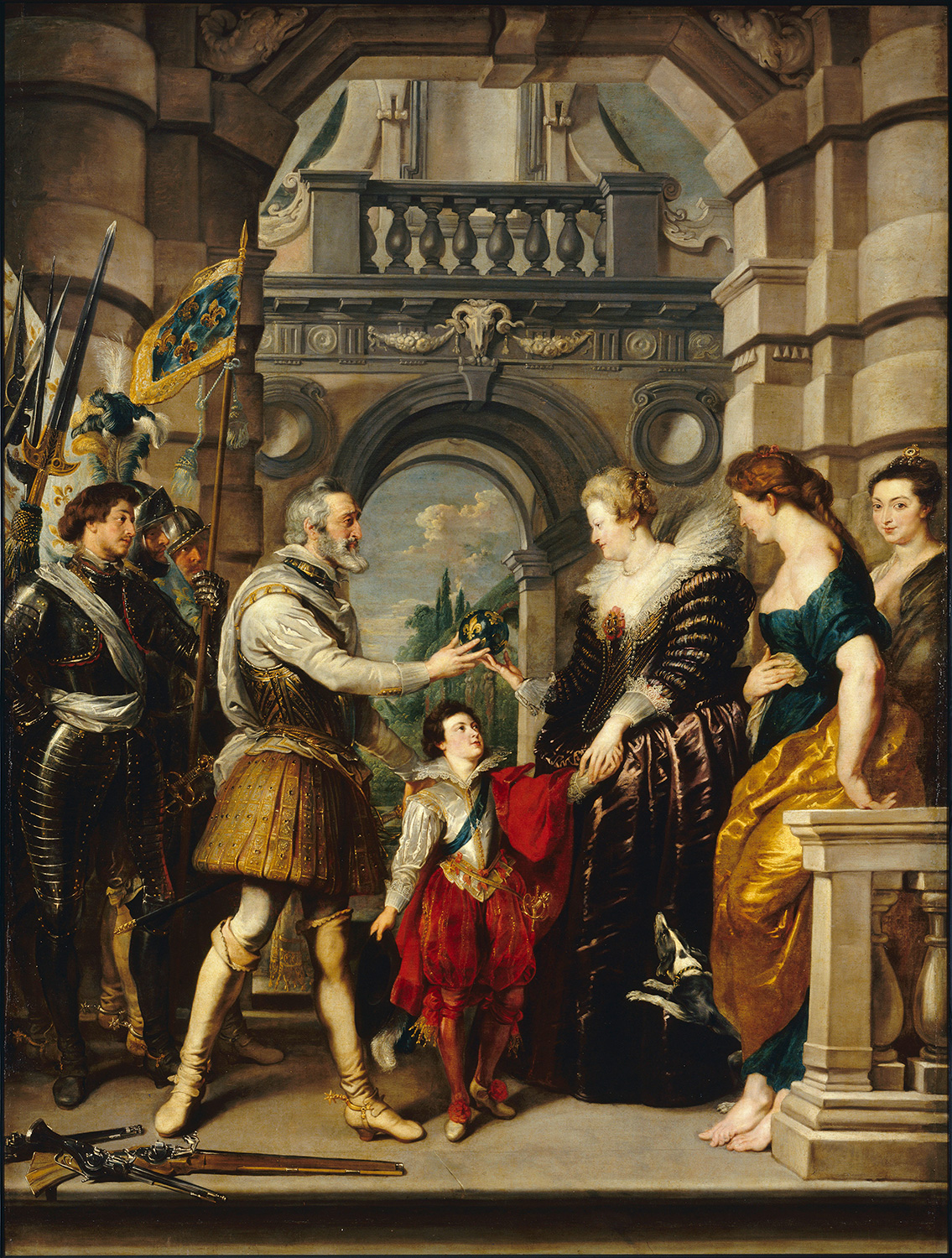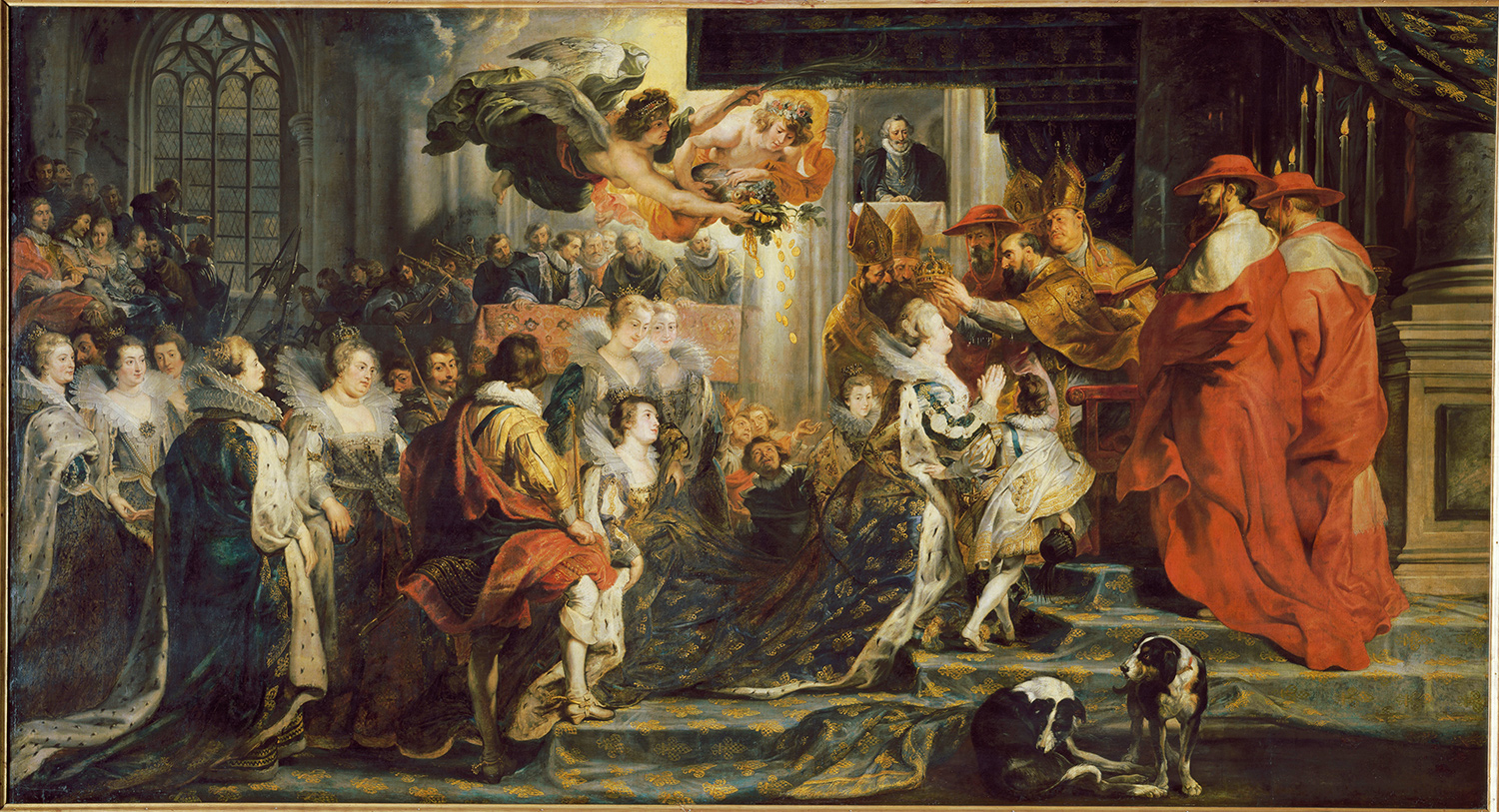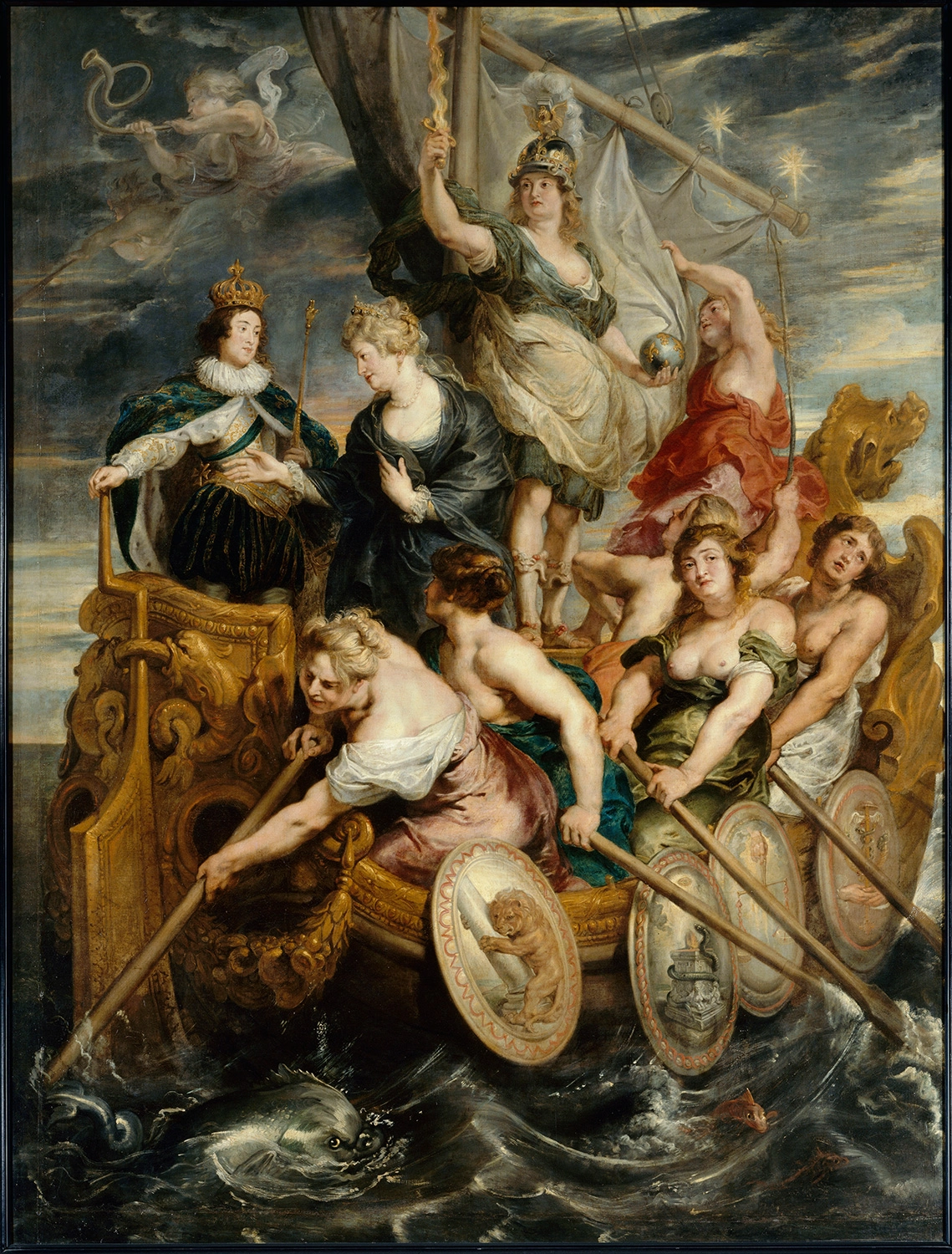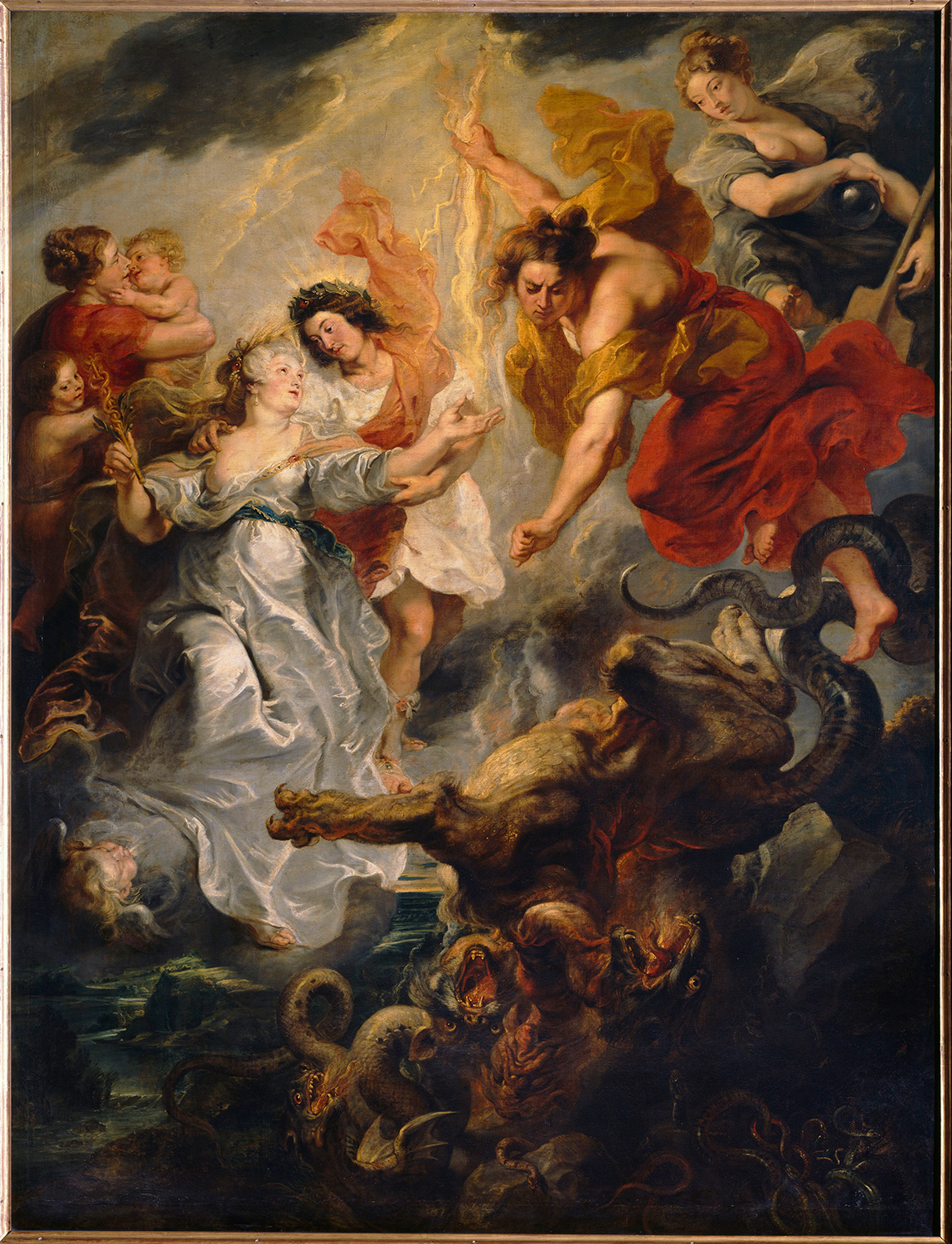To the glory of a queen of FranceThe Galerie Médicis
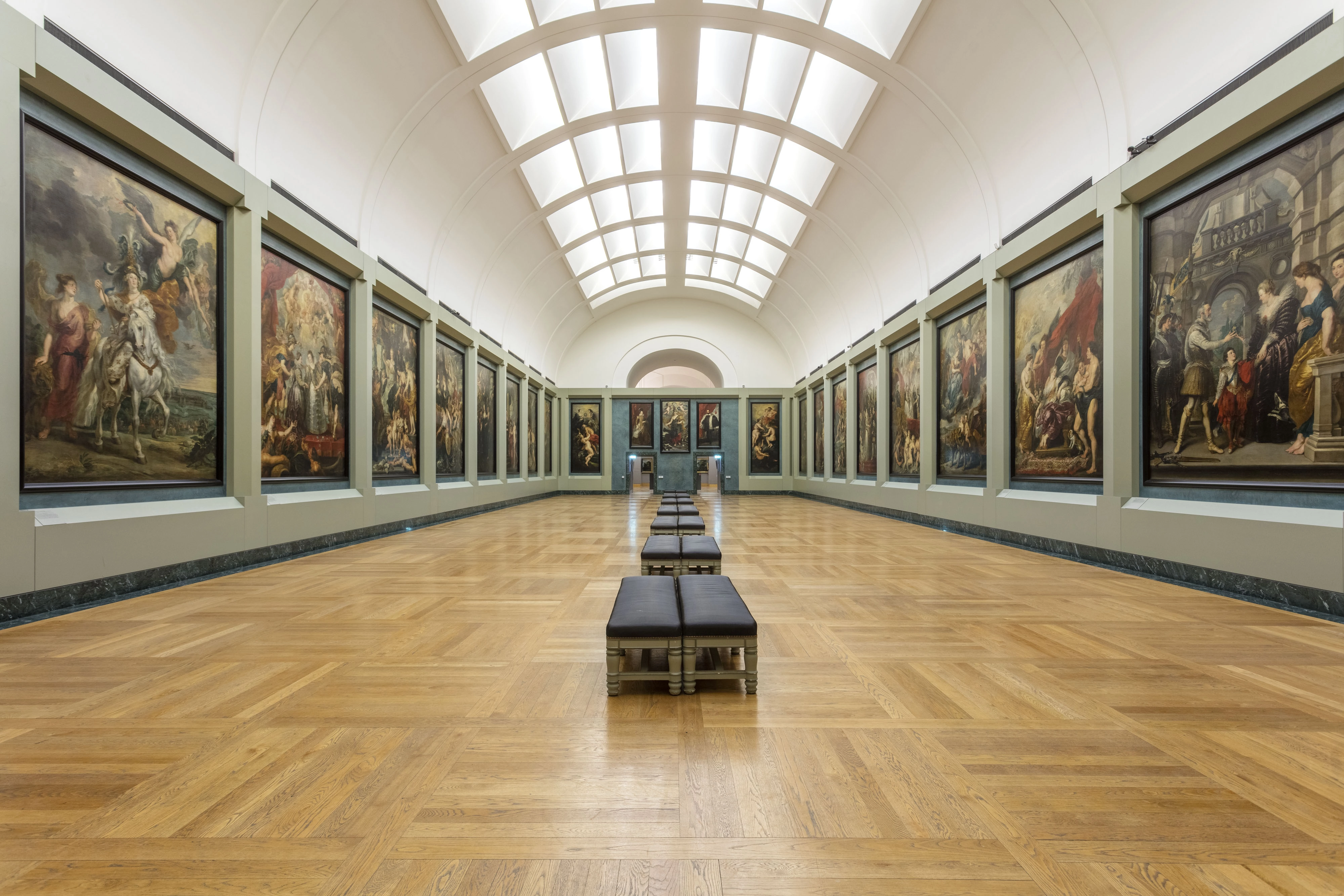
The Galerie Médicis houses one of the largest cycles of decorative paintings from a Parisian palace. This vast room was especially designed to welcome a series of monumental canvases by Rubens on the life of Marie de’ Medici. All the splendour that the queen proudly displayed in stately rooms in the Luxembourg palace when she returned from exile is recreated here.
The Galerie Médicis will be closed until summer 2024.
A royal commission
The Galerie Médicis houses the complete series of paintings on the life of Marie de’ Medici by Peter Paul Rubens, one of the greatest painters of his time. The episodes of the queen’s life are presented both allegorically and historically, and are hung in chronological order. Marie de’ Medici was the widow of King Henri IV and mother of King Louis XIII, with whom she had a shaky relationship. When the queen commissioned these paintings in 1622, she was just returning from several years of exile, forced upon her by none other than her own son.
Hailing from Florence, Italy, Marie had the Luxembourg palace built in Paris (which today houses the Senate), using the Palazzo Pitti as a model. The queen was trying to recreate the sumptuous Florentine palaces of her childhood. She decided to decorate two large rooms of her new palace with paintings that depicted her life and that of her royal husband. For that, she turned to the great master Peter Paul Rubens.

An artistic feat
In 1622, Rubens was one of the best-loved painters in Europe. He trained in Flanders, Italy and Spain between 1600 and 1608 before settling in Antwerp. The Flemish painter made a fortune and was at the head of a huge workshop. Rubens agreed to paint the complete series on the life of Marie de’ Medicis in four years flat, singlehandedly. He kept up his end of the bargain, and in 1625, just in time for the wedding festivities of Marie’s daughter, Henriette, and King Charles I of England, the paintings were finished!
Rubens once said, ‘I admit that I am more naturally inclined to make large-scale works than small oddities’. The Galerie Médicis serves as proof of the artist’s extraordinary stamina: no less than 21 canvases each measuring 4 metres in height, or 300m2 of paintings, and three large portraits of the queen and her parents! Quite the feat. But the queen didn’t pay her bills on time and Rubens had a lot of trouble collecting his due. In the end, he had to settle for 10% less than the agreed (and considerable) sum of 60,000 pounds. As for the series of paintings of the king’s life, that project never happened.
The turbulent life of Marie de’ Medici
Rubens had to use great skill and caution to depict the queen’s life, which was riddled with diplomatic faux pas. When Henri IV died, Marie took over the reins of the kingdom until her son, Louis XIII, was old enough to govern on his own. When little Louis finally came of age, putting an end to the Regency, Marie had a hard time letting go of power. In 1617, Louis XIII put his foot down, forcing his mother into exile. Marie ended up moving to Blois.
Mother and son would not patch things up until 1621. Beyond the artistic value of these paintings, the commission was an opportunity for Marie to tell her side of the story. Thanks to the artistry of Rubens, the queen mother staged an idealised image of her life and political decisions. But the artist also had to be careful not to offend the king of France. Not an easy task…
A Baroque whirlwind
… but he handled it like a pro. Swept up in the Baroque spirit that was blowing, the series mixes historic scenes and allegorical figures, realistic portraits and creative mythological figures with great artistic freedom. Rubens turned to the Greco-Roman pantheon as well as Christian references to glorify the queen. In The Education of Marie de’ Medici, for example, Minerva, the goddess of the Arts and Science, and Mercury, the messenger of the gods, help groom Marie for her future as a sovereign.
The style is Baroque at its best, with varied compositions spilling all over the place. From drapery to clouds, everything seems swept away in a bluster. Curvaceous bodies with pearly flesh swirl around in a tumble of tones. And despite this profusion and variety, on the whole, it works.
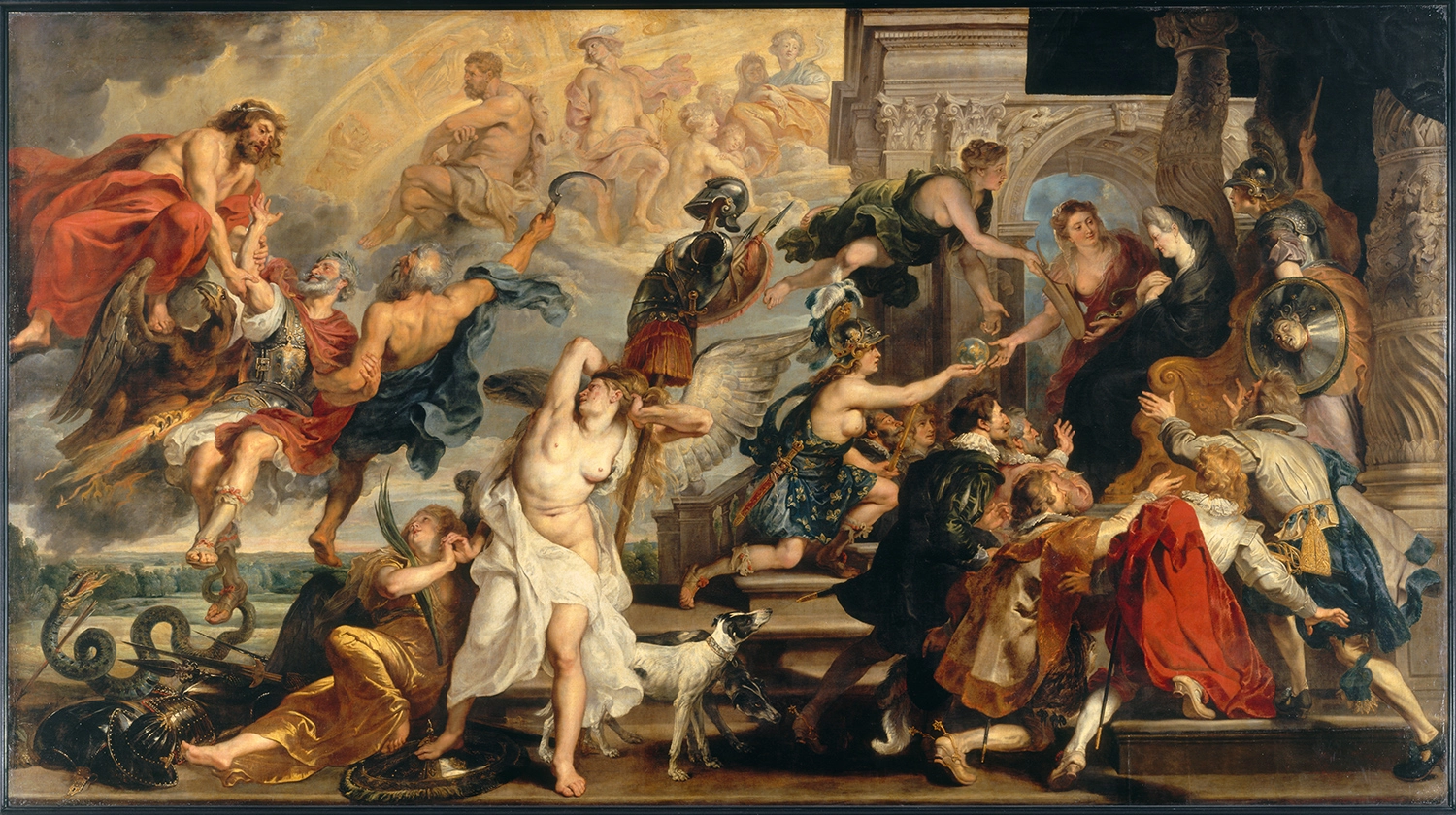
Being true to a series
At the Luxembourg palace, the series on the life of Marie de’ Medicis hung in a much narrower gallery than this one. Moved to the Louvre in 1790 for restoration work, the canvases have been on display since 1817, initially in the Grande Galerie. In 1899, they were transferred to the large room on the first floor of the Pavillon des Sessions. The architect Gaston Redon who organised this hanging focused on the decorative aspect: in a nod to the Luxembourg palace, the paintings were set in gilded frames and hung on a red wall, and no attention was paid to chronology.
Now in the Richelieu wing, the current hanging has the double advantage of letting the works shine and showing them as Rubens intended. One of the most imposing works housed at the Louvre is therefore once again true to itself.

The life of Marie de’ Medici
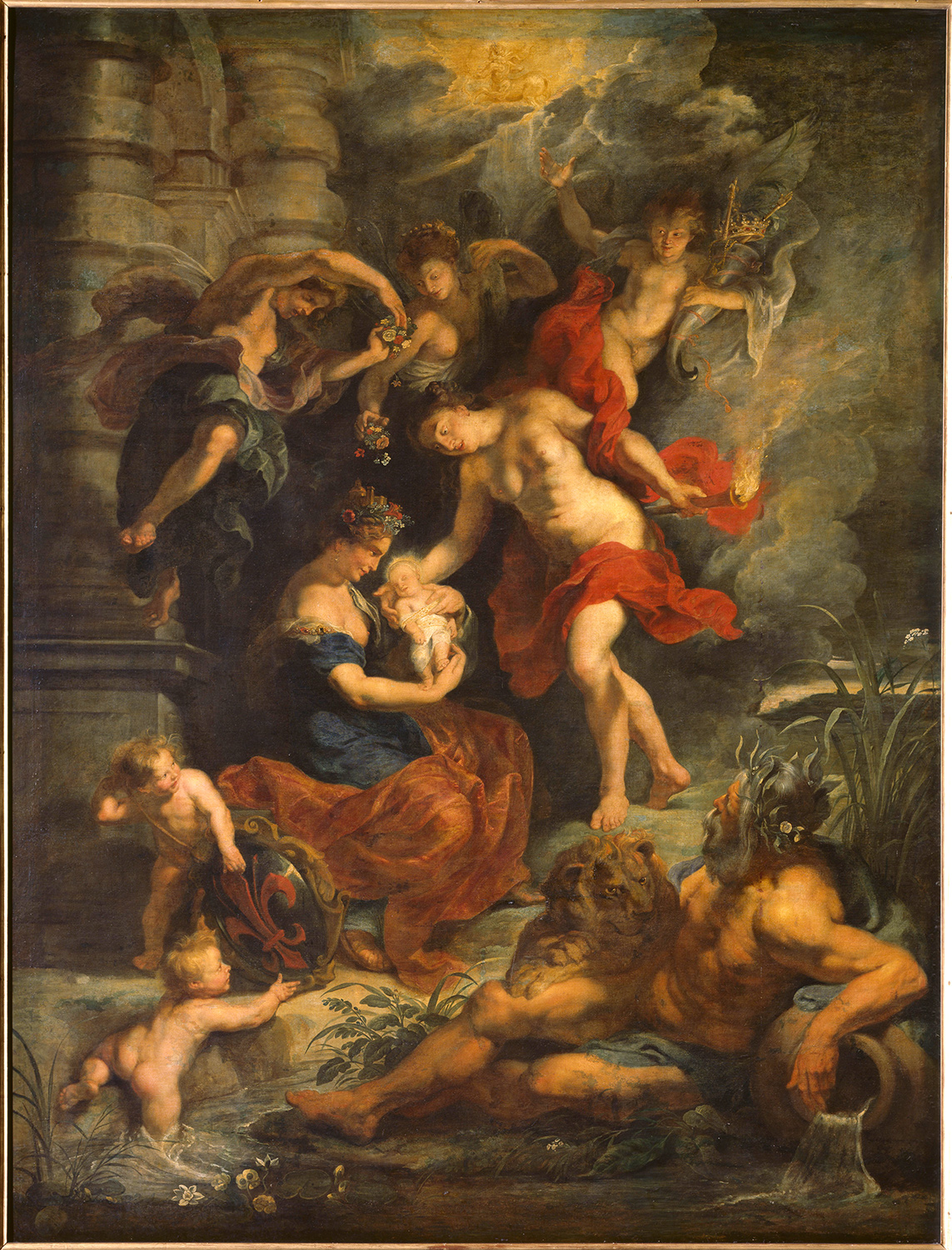
Peter Paul Rubens, The Birth of the Princess in Florence on 26 April 1573
1 sur 11
Did you know?
A grand entrance
It’s the most famous painting in the series. It earned the admiration of illustrious visitors to the Louvre, including the painter Delacroix who examined it closely to study the art of reflection. The artist paid especially close attention to the glistening drops of water trickling down the skin of water divinities. Many figures are shown witnesseingthe arrival of Marie on French soil, both real people like the queen’s sister, Eleonora de’ Medici, and allegorical and mythological figures like Neptune, who escorts Marie’s ship to safe harbour.

Did you know?
Historical coincidence
As fate would have it, Rubens was there for several key moments in the life of the queen. In 1600, the painter was at the celebrations thrown in Florence for Marie’s betrothal. When the queen, exiled from France by her son, arrived in Cologne in 1641 (where she would die a year later), it was none other than Rubens who offered her hospitality!
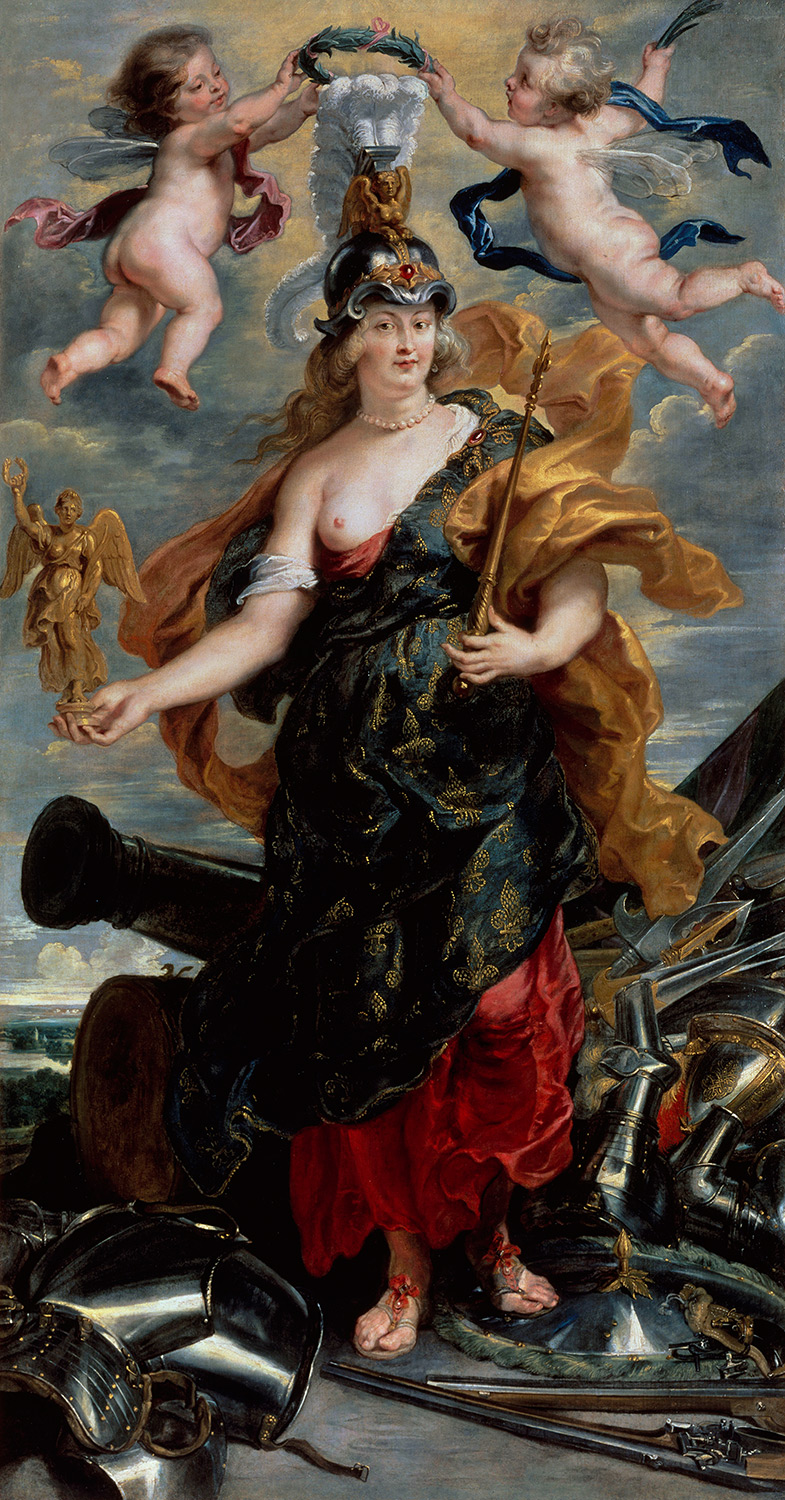
More to explore
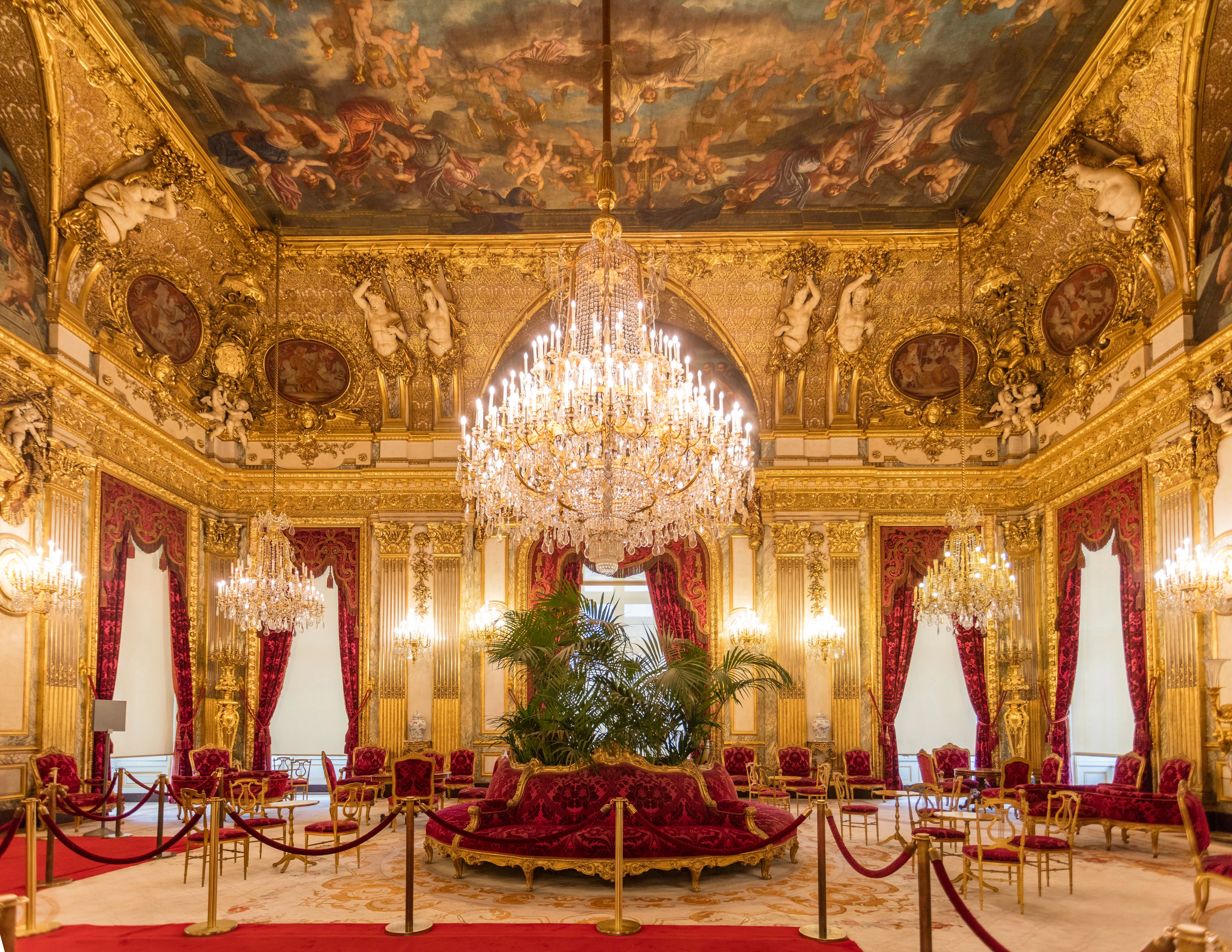
The Splendour of the Second Empire
The Napoleon III Apartments

Think big!
Les Salles Rouges (The Red Rooms)
